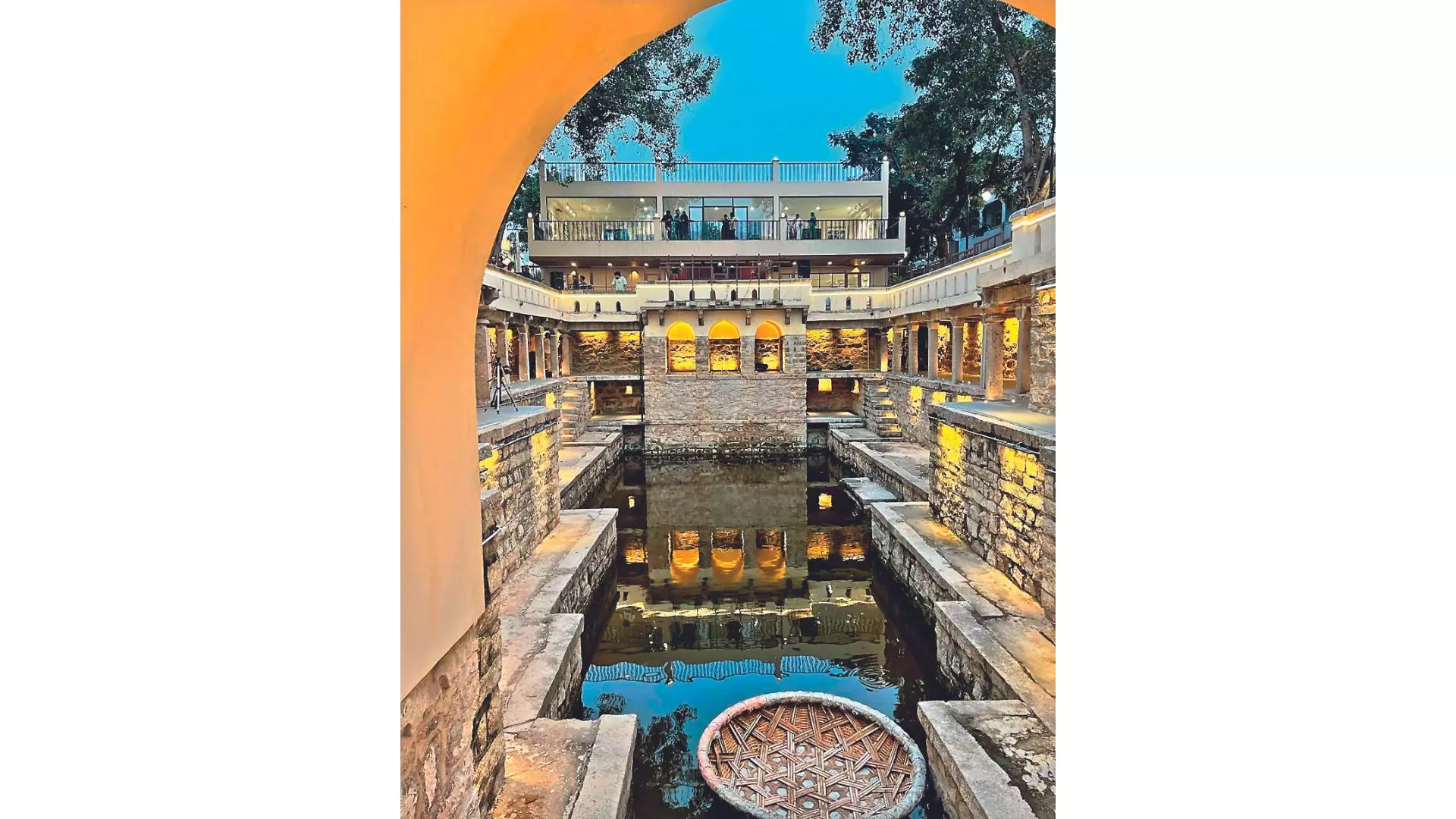World Heritage Day: Restoring the lost glory
A group of heritage influencers is revitalising history and creating a sense of belonging

On April 18, the 17th-century Bansilalpet stepwell will be illuminated with strings of lights, and guests will be mesmerised by the “Shanmata” performance, which revolves around the worship of six principal Hindu deities: Shiva, Vishnu, Shakti, Ganesha, Surya, and Skanda.
Stepwells that have been neglected are being renovated to serve as social and cultural centres for the neighbourhood, as well as a supply of water. No matter how much we believe we understand about this genre, there is always more to discover.
This is where a group of heritage influencers tell stories about nearly extinct cultural traditions or underexplored heritage sites.
“The country has thousands of stepwells that are several hundred years old. Telangana State has 300 step wells. Maharashtra has over 18000 stepwells. Bansilalpet stepwell was revived after an 18-month effort. The success story of Bansilalpet stepwell restoration resonated in New Delhi, and they have invited us to restore 150-year-old step well in Rashtrapati Nilayam in Hyderabad,” says Kalpana Ramesh, architect and head of the Rainwater Project.
Documenting lesser-known heritage monuments
Maroof Umar ‘Culmen’, a heritage storyteller, has expanded his work beyond borders. His passion for Awadhi culture, art, and architecture inspired him to launch his Instagram profile in 2021, which resulted in viral videos, celebrity recognition, and awards for his work. In his short films, he documents lesser-known Lucknow heritage monuments such as Bilehra Fort or Butler Palace.
“My journey into content creation centred around heritage and culture was primarily motivated by my concerns about overtourism. This phenomenon often leads to a few famous landmarks being overrun by tourists while many lesser-known historical sites are left neglected, gradually deteriorating and risking oblivion,” says Umar, a graphic designer and Instagram photographer who has a body of collaborative work across platforms such as Google and National Geographic.
Talking about the hidden gem the ‘Makka Darzi ka Imambara’ at Khairabad, some two hours from Lucknow, Umar says, “This secret gem was created by a tailor who specialised in making European-style clothing for Awadh’s King, Naseer ud din Haider. He supported the development of this lovely Imambara with his little earnings. What distinguishes this site is its elaborate stucco work, which demonstrates the artisan’s talent and dedication. I really believe that increasing awareness of such underappreciated monuments is critical. It not only aids in their preservation, but it also improves their accessibility, allowing more people to visit and appreciate their historical value.”
Spicing up history with anecdotes
Umair Shah, 27, is a numismatist, an Instagram influencer, and a self-confessed ‘history nerd’. “The use of Instagram and heritage walks demonstrates a commitment to sharing this knowledge with a wider audience,” says Shah, who leads heritage walking excursions in the old districts of Delhi-NCR and western Uttar Pradesh. Shah, a skilled numismatist, spiced up his history tours with anecdotes he discovered while collecting coins. “Most people go to monuments to take selfies or dance on a reel. But I want them to realise what more the place offers.”
Delhi is rich in history, with magnificent forts and frightening graves. “Compared to the more famous Kutub Minar complex, Mehrauli Archaeological Park and its monuments are relatively unknown. The Delhi Development Authority (DDA) has restored the park, including the repair of Shah Quli Khan’s tomb and the establishment of a cafe nearby. Kuli Khan’s tomb was originally that of Akbar’s foster brother, but it was later taken over by a British agent, Thomas Metcalfe, who converted it into his summer home. He used to spend time there, smoke hookah, and even construct a boat house with a lake within the park,” says Shah.
Discussing the importance of coinage as a tangible window to the past, providing historical insights on rulers and events.
“They emphasise the importance of coins in storytelling and historical documentation, citing instances such as those produced by Nadir Shah during his invasion of Delhi in 1739,” says Shah, better known by his Instagram moniker, Sikkawala.
‘heritage is my identity’
Rameen Khan’s CityTales tries to recreate it by conducting modern-day baithaks — storytelling sessions infused with Ghalib, Mir Taqi Mir, Sufi mystiques, and Mughal history centred on the walled city. Rameen feels that narrative in the true Kissa-Goi format can bring a monument’s material fabric alive. “I love reading about history and visiting historical sites. The reason I began talking and writing about it was that so much fake history is being spread via WhatsApp with no basis in truth and that popular media concentrates solely on the most popular monuments in big cities such as Delhi, Agra, and Lucknow. I wanted to discuss the heritage of small towns, which has not been protected and is in a far more fragile state,” says Rameen adding, “Even in the case of the most popular monuments, the reported stories were unidimensional. I wanted to reveal more layers. For example, the historic Purana Qila in Delhi was used as a refugee camp during partition in 1947. Or that Humayun’s tomb witnessed the arrest of the final Mughal emperor, Bahadur Shah Zafar, marking the end of the Mughal empire.”
Stepwells are brilliant pieces of architecture that represent both our past and future. and every citizen has a duty to take pride in and uphold our rich cultural legacy.” — Sudha Reddy, director of Meil, celebrates World Heritage Day at Bansilalpet Stepwell.
The use of Instagram and heritage walks demonstrates a commitment to sharing this knowledge with a wider audience. — Umair Shah, numismatist, an Instagram influencer, and a self-confessed ‘history nerd’
The success story of Bansilalpet stepwell restoration resonated in New Delhi, and they have invited us to restore a one-year-old step well in Rashtrapati Nilayam in Hyderabad. — Kalpana Ramesh, architect and head of the Rainwater Project

